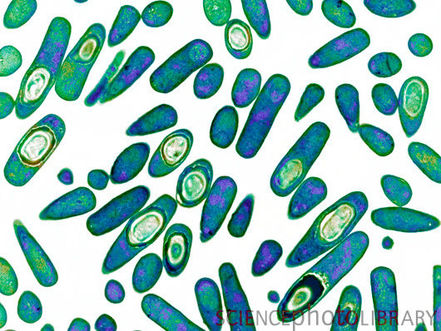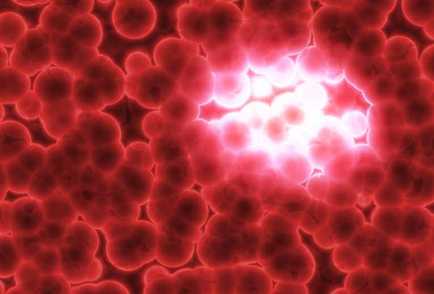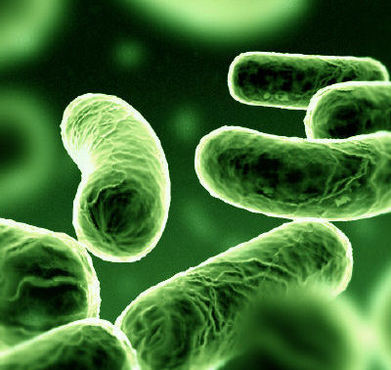Genetic.
Genetic is the science that deals
with heredity. Thus, it is the study of the mechanisms by which different
characteristics are passed on from parents to offsprings (progeny).
Gene. Genes are genetic determinants and thus control heredity and determine properties of the organism. The genes are functional units of the chromosomes. Synthesis of protein components and enzymes of a cell is regulated by genes. DNA is responsible for both gene function and replication. By replication heredity or stability of a type is maintained. An organism containing a normal gene is known as 'wild type'. Genes may rarely mutate (change) resulting in heritable variations called mutations (See chapter 8). The changed organism is called a mutant.
Genotype. It is the genetic determinant of a cell.
Phenotype. This is the structural and physiological manifestations of the organism due to a particular genotype.
Genome. Genome is the entire set of genes and thus is the totality of genetic information in an organism.
Gene. Genes are genetic determinants and thus control heredity and determine properties of the organism. The genes are functional units of the chromosomes. Synthesis of protein components and enzymes of a cell is regulated by genes. DNA is responsible for both gene function and replication. By replication heredity or stability of a type is maintained. An organism containing a normal gene is known as 'wild type'. Genes may rarely mutate (change) resulting in heritable variations called mutations (See chapter 8). The changed organism is called a mutant.
Genotype. It is the genetic determinant of a cell.
Phenotype. This is the structural and physiological manifestations of the organism due to a particular genotype.
Genome. Genome is the entire set of genes and thus is the totality of genetic information in an organism.
_BACTERIAL GENOME (PROKARYOTIC GENOME)
_
Genes are carried on :
1. Bacterial chromosome. Chromosomes carry most prokaryotic genes. Genes essential for bacterial growth are carried on chromosome. It is present in all bacteria. Only one chromo-some is present in a bacterial nucleoid. Bacterial chromosome is a single circle containing about 4000 kbp (kilobase pairs) of DNA. DNA is a double stranded helical structure. A molecule of DNA consists of many mononucleotides. A mononucleotide consists of a molecule of sugar, a molecule of phosphate and a molecule of base. In each strand of DNA, molecules of phosphate and sugar alternate, and one of the four bases present in DNA is attached with the sugar. The four bases are adenine, thymine, guanine and cytosine. A base of a strand joins with its complementary base of the other strand. Adenine is always complementary to thymine, and guanine to cytosine. During cell division, duplication of chromosome occurs so that each daughter cell receives an identical set.
2.Plasmid. Certain bacteria contain plasmids. Plasmids carry genes associated with specialized function. These are extra-chromosomal genetic elements. Plasmid is a circular double stranded DNA having several to 100 kbp. Plasmids replicate autonomously and they code for functions which are normally not indispensable. In some cases, plasmids may be transferred from one cell to another and thus may carry sets of specialized genetic information through a population, e.g. Drug resistance plasmids (R factors) may render diverse bacteria resistant to antimicrobial drugs.
3.Transposon. Transposons are genetic elements with DNA sequences of several kbp. They can migrate from one genetic
locus to another. Transfer of transposons can occur between one plasmid to another, or between plasmid and chromosome within a bacterial cell. The process is called transposition. Transposons carry genes for specialized functions, e.g. antibiotic resistance. Transposons do not contain genetic information for their replication.
NOTE: Bacteria infected with bacterial viruses (bacteriophages) contain the genes of the phage. Lysogenic bacteria are the bacteria which contain nonlytic prophage state of temperate phages.
1. Bacterial chromosome. Chromosomes carry most prokaryotic genes. Genes essential for bacterial growth are carried on chromosome. It is present in all bacteria. Only one chromo-some is present in a bacterial nucleoid. Bacterial chromosome is a single circle containing about 4000 kbp (kilobase pairs) of DNA. DNA is a double stranded helical structure. A molecule of DNA consists of many mononucleotides. A mononucleotide consists of a molecule of sugar, a molecule of phosphate and a molecule of base. In each strand of DNA, molecules of phosphate and sugar alternate, and one of the four bases present in DNA is attached with the sugar. The four bases are adenine, thymine, guanine and cytosine. A base of a strand joins with its complementary base of the other strand. Adenine is always complementary to thymine, and guanine to cytosine. During cell division, duplication of chromosome occurs so that each daughter cell receives an identical set.
2.Plasmid. Certain bacteria contain plasmids. Plasmids carry genes associated with specialized function. These are extra-chromosomal genetic elements. Plasmid is a circular double stranded DNA having several to 100 kbp. Plasmids replicate autonomously and they code for functions which are normally not indispensable. In some cases, plasmids may be transferred from one cell to another and thus may carry sets of specialized genetic information through a population, e.g. Drug resistance plasmids (R factors) may render diverse bacteria resistant to antimicrobial drugs.
3.Transposon. Transposons are genetic elements with DNA sequences of several kbp. They can migrate from one genetic
locus to another. Transfer of transposons can occur between one plasmid to another, or between plasmid and chromosome within a bacterial cell. The process is called transposition. Transposons carry genes for specialized functions, e.g. antibiotic resistance. Transposons do not contain genetic information for their replication.
NOTE: Bacteria infected with bacterial viruses (bacteriophages) contain the genes of the phage. Lysogenic bacteria are the bacteria which contain nonlytic prophage state of temperate phages.
_Phenotypic changes that can occur in bacteria due to Mutation:
1. Loss of capsule
formation by capsulated bacteria.
2. Change in colony characters.
3. Change in fermentation activity.
4. Loss of sensitivity to antibiotics.
5. Loss of sensitivity to bacteriophage (Bacterial virus).
TRANSFER OF GENE
Transfer of DNA is widespread among bacterial cells. In intercellular transfer, the genetic material passes from the donor cell to the recipient cell. It leads to genetic diversity of bacteria. Intercellular transfer of DNA between bacterial strains can occur by conjugation, transduction and transformation.
1. Conjugation
In conjugation, a suitable donor cell (male) comes near a recipient cell (female), establishes direct cell-to-cell contact and transfers genetic material. Plasmids are most frequently transferred by conjugation. Plasmids can also mobilize portions of chromosome for transfer. This is mediated by a fertility or F factor which is carried on a plasmid. Sex pilus is responsible for the attachment of donor (F*) cell and recipient cell (F) in bacterial conjugation (mating) process. Cell with sex pilus is the male and without sex pilus is the female bacteria.
Example: Transfer of antibiotic resistance can occur by conjugation. Transfer of drug resistant plasmid is called R-factor (Resistance plasmid). This occurs via sex pilus from the male (donor) cell to the female (recipient) cell.
2.Transduction
Transduction is phage-mediated. In transduction, genetic material of donor bacterial cell is enclosed in a bacterial virus (phage) and transferred to the recipient cell.
3.Transformation
In transformation, the recipient cell directly takes up naked DNA released from the donor cell altering its genotype. It can occur in the medium. Natural transformation also can occur.
2. Change in colony characters.
3. Change in fermentation activity.
4. Loss of sensitivity to antibiotics.
5. Loss of sensitivity to bacteriophage (Bacterial virus).
TRANSFER OF GENE
Transfer of DNA is widespread among bacterial cells. In intercellular transfer, the genetic material passes from the donor cell to the recipient cell. It leads to genetic diversity of bacteria. Intercellular transfer of DNA between bacterial strains can occur by conjugation, transduction and transformation.
1. Conjugation
In conjugation, a suitable donor cell (male) comes near a recipient cell (female), establishes direct cell-to-cell contact and transfers genetic material. Plasmids are most frequently transferred by conjugation. Plasmids can also mobilize portions of chromosome for transfer. This is mediated by a fertility or F factor which is carried on a plasmid. Sex pilus is responsible for the attachment of donor (F*) cell and recipient cell (F) in bacterial conjugation (mating) process. Cell with sex pilus is the male and without sex pilus is the female bacteria.
Example: Transfer of antibiotic resistance can occur by conjugation. Transfer of drug resistant plasmid is called R-factor (Resistance plasmid). This occurs via sex pilus from the male (donor) cell to the female (recipient) cell.
2.Transduction
Transduction is phage-mediated. In transduction, genetic material of donor bacterial cell is enclosed in a bacterial virus (phage) and transferred to the recipient cell.
3.Transformation
In transformation, the recipient cell directly takes up naked DNA released from the donor cell altering its genotype. It can occur in the medium. Natural transformation also can occur.



